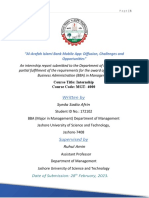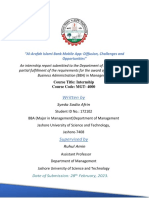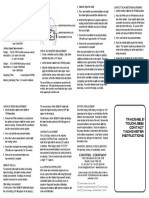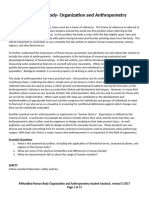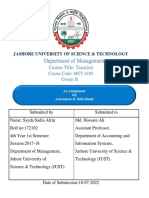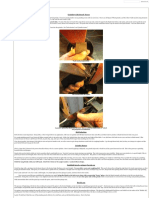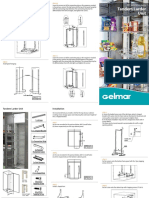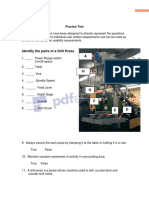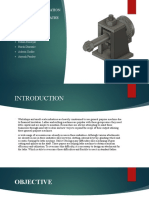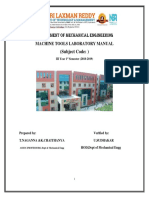0% found this document useful (0 votes)
69 views19 pagesLecture 5 Machine Tool Structure
Machine tool structure consists of beds, columns, bases and housing and makes up around three fourths of the total weight. It transmits both static and operational loads. Structures can be classified by purpose, manufacturing process, or pattern of load transmission. Common types include beds, frames, bases, housings, columns, and casings. Rigidity, shape, layout, assembly, maintenance and cost are important considerations in the design. Materials like cast iron and steel are commonly used due to their properties and availability. Manufacturing process must consider accurate dimensions, internal stresses, and production capabilities. Chip handling also influences design to prevent heat issues.
Uploaded by
MD Al-AminCopyright
© © All Rights Reserved
We take content rights seriously. If you suspect this is your content, claim it here.
Available Formats
Download as PPTX, PDF, TXT or read online on Scribd
0% found this document useful (0 votes)
69 views19 pagesLecture 5 Machine Tool Structure
Machine tool structure consists of beds, columns, bases and housing and makes up around three fourths of the total weight. It transmits both static and operational loads. Structures can be classified by purpose, manufacturing process, or pattern of load transmission. Common types include beds, frames, bases, housings, columns, and casings. Rigidity, shape, layout, assembly, maintenance and cost are important considerations in the design. Materials like cast iron and steel are commonly used due to their properties and availability. Manufacturing process must consider accurate dimensions, internal stresses, and production capabilities. Chip handling also influences design to prevent heat issues.
Uploaded by
MD Al-AminCopyright
© © All Rights Reserved
We take content rights seriously. If you suspect this is your content, claim it here.
Available Formats
Download as PPTX, PDF, TXT or read online on Scribd
/ 19

